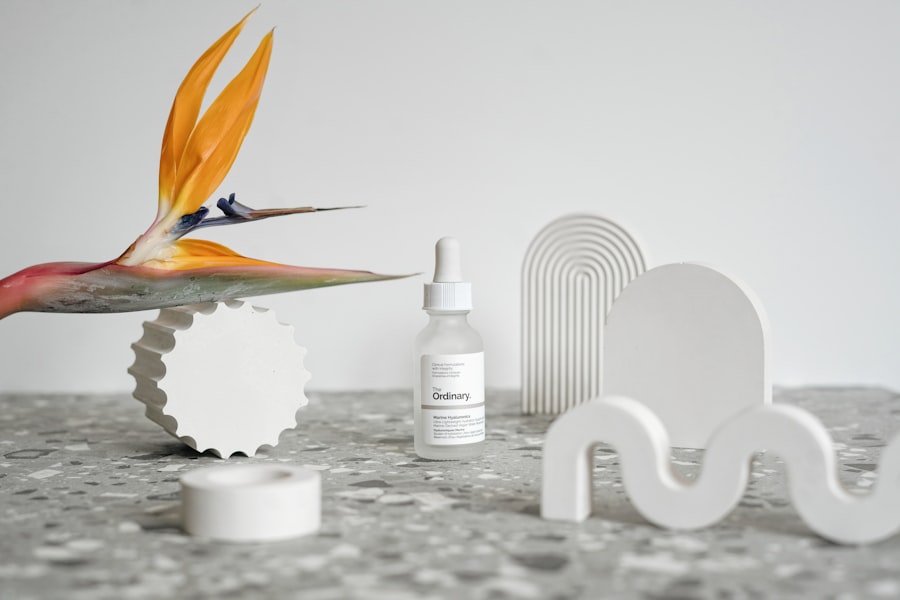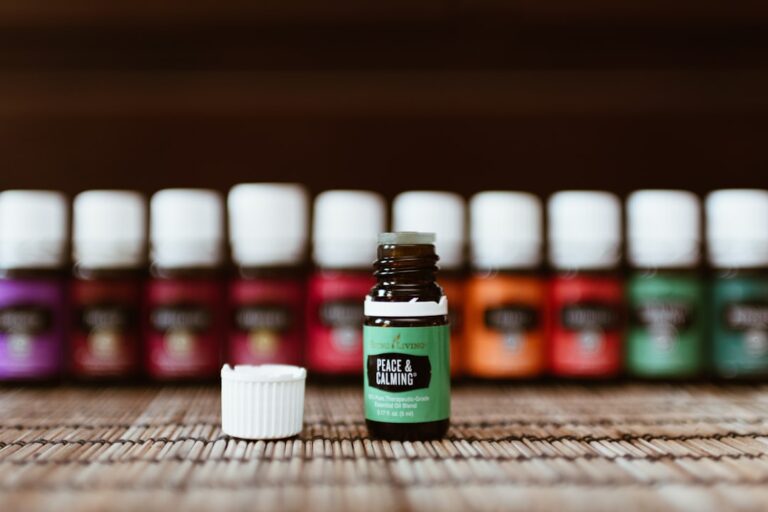DIY Dry Shampoo: Easy Steps for Homemade Refreshing Hair Care

Dry shampoo has gained popularity as a convenient hair care solution for refreshing hair between washes. However, concerns about harsh chemicals in commercial products have led to increased interest in DIY dry shampoo. Homemade dry shampoo offers a natural, customizable, and cost-effective alternative to store-bought options.
It allows individuals to select ingredients tailored to their specific hair type and preferences. This article will examine the advantages of homemade dry shampoo, necessary ingredients, preparation methods, usage tips, and alternatives to DIY formulations. Additionally, it will provide insights into this growing trend in hair care and its implications for personal grooming routines.
Key Takeaways
- DIY dry shampoo is a convenient and cost-effective alternative to traditional shampoo for freshening up hair between washes.
- Homemade dry shampoo offers benefits such as absorbing excess oil, adding volume, and extending the life of hairstyles.
- Common ingredients for DIY dry shampoo include cornstarch, arrowroot powder, baking soda, and essential oils.
- Making DIY dry shampoo involves mixing the chosen ingredients and applying the mixture to the roots of the hair.
- Tips for using DIY dry shampoo include applying it in small sections, letting it sit for a few minutes, and brushing it out thoroughly.
Benefits of Homemade Dry Shampoo
Control Over Ingredients
DIY dry shampoo allows you to control the ingredients that go into the product, ensuring that it is free from harmful chemicals and additives. This is particularly beneficial for individuals with sensitive scalps or allergies to certain ingredients commonly found in commercial dry shampoos.
Customization for Hair Type and Color
Homemade dry shampoo can be customized to suit different hair types and colors. By choosing specific ingredients, such as arrowroot powder for light hair or cocoa powder for dark hair, you can ensure that the dry shampoo blends seamlessly with your hair color. Furthermore, DIY dry shampoo is cost-effective and environmentally friendly, as it reduces the need for frequent washing and the use of disposable aerosol cans.
Addressing Individual Hair Concerns
Homemade dry shampoo also provides the benefit of being able to tailor the product to your specific hair needs. For example, if you have oily hair, you can add ingredients such as kaolin clay or cornstarch to absorb excess oil and refresh your hair. If you have dry or damaged hair, you can incorporate nourishing ingredients like essential oils or aloe vera powder to moisturize and condition your locks. This level of customization allows you to address your individual hair concerns while extending the time between washes.
Convenience and Sustainability
Additionally, DIY dry shampoo is quick and easy to make, requiring just a few simple ingredients that are often already available in your kitchen pantry. By making your own dry shampoo, you can save time and money while also reducing your environmental impact by minimizing the use of disposable packaging. Overall, the benefits of homemade dry shampoo make it an attractive option for those seeking a natural, personalized, and sustainable hair care solution.
Ingredients for DIY Dry Shampoo

The beauty of DIY dry shampoo lies in its simplicity and versatility. The basic recipe for homemade dry shampoo typically consists of two main ingredients: an absorbent base and a scent (optional). The absorbent base is what helps to soak up excess oil from the scalp and hair, while the scent adds a pleasant fragrance to the dry shampoo.
Common absorbent bases include arrowroot powder, cornstarch, rice flour, or even cocoa powder for darker hair. These natural powders work by absorbing oil and sweat from the scalp, leaving the hair looking and feeling fresher. As for scents, you can add a few drops of essential oils such as lavender, rosemary, or peppermint to give your DIY dry shampoo a delightful aroma.
In addition to the absorbent base and scent, you can also customize your DIY dry shampoo by adding other beneficial ingredients based on your hair type and needs. For example, if you have oily hair, you may want to incorporate kaolin clay or baking soda to enhance oil absorption. If you have dry or damaged hair, you can include nourishing ingredients such as finely ground oats or aloe vera powder to provide moisture and conditioning.
These additional ingredients not only contribute to the effectiveness of the dry shampoo but also allow you to tailor the product to address specific hair concerns. Overall, the ingredients for DIY dry shampoo are simple, natural, and easily customizable, making it a versatile option for maintaining fresh and healthy-looking hair.
Steps to Make DIY Dry Shampoo
| Ingredients | Measurements |
|---|---|
| Cornstarch | 2 tablespoons |
| Baking soda | 2 tablespoons |
| Essential oil (optional) | A few drops |
| Cocoa powder (for dark hair, optional) | 1 tablespoon |
| Container with shaker lid | 1 |
Making your own DIY dry shampoo is a straightforward process that requires just a few simple steps. To start, you will need to gather the necessary ingredients based on your hair type and preferences. Once you have selected an absorbent base, such as arrowroot powder or cornstarch, and any additional ingredients like cocoa powder or essential oils, you can begin creating your customized dry shampoo.
To make the dry shampoo, simply combine the absorbent base with any additional ingredients in a clean bowl or container. Use a whisk or spoon to thoroughly mix the ingredients together until they are well combined. After mixing the ingredients, transfer the DIY dry shampoo into a clean and airtight container for storage.
A small jar or shaker bottle works well for this purpose, as it allows for easy application of the dry shampoo. Before each use, give the container a gentle shake to ensure that the ingredients are evenly distributed. When applying the DIY dry shampoo, use a makeup brush or your fingertips to lightly dust the powder onto the roots of your hair, focusing on areas where oil buildup is most noticeable.
Allow the dry shampoo to sit for a few minutes to absorb any excess oil before gently massaging or brushing it through your hair to distribute the product evenly. By following these simple steps, you can create your own customized DIY dry shampoo that is tailored to your specific hair needs.
Tips for Using DIY Dry Shampoo
Using DIY dry shampoo effectively requires some tips and tricks to achieve optimal results. Firstly, when applying the dry shampoo, it’s important to start with a small amount and gradually add more as needed. This helps to avoid over-applying the product and prevents any visible residue in your hair.
Additionally, focus on applying the dry shampoo to the roots of your hair where oil tends to accumulate, rather than applying it all over your hair. This targeted application helps to absorb excess oil while maintaining a natural look and feel to your hair. Another tip for using DIY dry shampoo is to allow the product some time to work its magic before brushing or styling your hair.
Letting the dry shampoo sit for a few minutes gives it the opportunity to absorb oil and sweat from the scalp, resulting in fresher-looking hair. After allowing the dry shampoo to sit, use a brush or your fingertips to gently massage and distribute the product through your hair. This helps to ensure that the dry shampoo is evenly distributed and effectively refreshes your locks.
Lastly, if you find that your hair still feels oily after using the dry shampoo, you can repeat the application process or consider incorporating additional oil-absorbing ingredients into your DIY dry shampoo recipe. In addition to these tips for using DIY dry shampoo, it’s important to remember that while dry shampoo is a convenient way to refresh your hair between washes, it should not replace regular washing and cleansing of your scalp and hair. Overuse of dry shampoo can lead to product buildup and potential scalp issues, so it’s best to use it in moderation as needed.
By following these tips for using DIY dry shampoo, you can effectively maintain fresh and healthy-looking hair while extending the time between washes.
Alternatives to DIY Dry Shampoo

Natural Powders as a Dry Shampoo Substitute
One popular alternative is using natural powders such as cornstarch or arrowroot powder on their own as a simple and effective dry shampoo substitute. These powders work by absorbing excess oil from the scalp and can be applied using a makeup brush or fingertips in a similar manner to traditional dry shampoo.
Specialized Wet Shampoos and Foam Cleansers
Another alternative to DIY dry shampoo is using traditional wet shampoos that are specifically formulated for extending time between washes. These shampoos often contain gentle cleansing agents and oil-absorbing ingredients that help to refresh and revitalize hair without the need for water. Additionally, there are spray-on foam cleansers designed for use on dry hair that provide a quick and convenient way to cleanse and refresh without traditional washing.
Natural Remedies for Hair Refreshment
Furthermore, some people opt for using natural remedies such as apple cider vinegar rinses or herbal infusions as an alternative to traditional dry shampoo. These natural alternatives can help to cleanse and balance the scalp while refreshing the hair without the need for conventional shampoos.
Choosing the Right Alternative for You
Overall, while DIY dry shampoo is a popular choice for maintaining fresh and healthy-looking hair between washes, there are several alternative methods available that offer similar benefits. Whether using natural powders, specialized wet shampoos, foam cleansers, or natural remedies, there are various options to suit individual preferences and needs when it comes to refreshing hair without traditional washing.
Conclusion and Final Thoughts
In conclusion, DIY dry shampoo offers a natural and customizable alternative to commercial products for refreshing and reviving hair between washes. The benefits of homemade dry shampoo include control over ingredients, customization for specific hair needs, cost-effectiveness, and environmental friendliness. By using simple ingredients such as absorbent bases and scents along with optional additional ingredients tailored to individual preferences, anyone can create their own personalized DIY dry shampoo at home.
When making DIY dry shampoo, it’s important to follow simple steps such as mixing ingredients thoroughly and storing them in an airtight container for easy application. Using DIY dry shampoo effectively involves tips such as targeted application at the roots of the hair, allowing time for absorption before distributing through the hair, and using in moderation alongside regular washing. While DIY dry shampoo is a popular choice for refreshing hair between washes, there are alternative methods available such as natural powders on their own, specialized wet shampoos, foam cleansers, or natural remedies that offer similar benefits.
Ultimately, whether choosing DIY dry shampoo or an alternative method, there are various options available for maintaining fresh and healthy-looking hair without traditional washing. In final thoughts on this popular hair care trend, DIY dry shampoo provides a natural and customizable solution for those seeking an effective way to refresh their locks between washes. With its simplicity, versatility, and benefits for both individuals and the environment, homemade dry shampoo has become a go-to option for many looking to maintain healthy and vibrant hair in a convenient and sustainable manner.
If you’re interested in finding more ways to save time and money, check out this article on lazy ways to make money online. It’s full of practical tips and tricks for earning extra income without putting in a lot of effort. Just like making your own dry shampoo, these life hacks can help you streamline your routine and make the most of your resources.
FAQs
What is dry shampoo?
Dry shampoo is a powder or spray that is used to absorb excess oil and grease from the hair, making it look and feel cleaner without the need for water.
Why make your own dry shampoo?
Making your own dry shampoo allows you to customize the ingredients to suit your hair type and preferences, and it can also be a more cost-effective and environmentally friendly option.
What are the benefits of using dry shampoo?
Dry shampoo can help extend the time between hair washes, add volume and texture to the hair, and can be a convenient option for on-the-go or travel.
What are the common ingredients used to make dry shampoo?
Common ingredients used to make dry shampoo include cornstarch, arrowroot powder, baking soda, and essential oils for fragrance.
How do you make your own dry shampoo?
To make your own dry shampoo, you can mix together your chosen absorbent powder with a small amount of essential oils for fragrance, and then apply it to the roots of your hair using a makeup brush or by sprinkling it on and massaging it in.
Are there any potential drawbacks to using dry shampoo?
Using dry shampoo too frequently or using products with certain ingredients can potentially cause buildup on the scalp and lead to irritation or other hair and scalp issues. It’s important to use dry shampoo in moderation and to choose products with gentle, natural ingredients.






